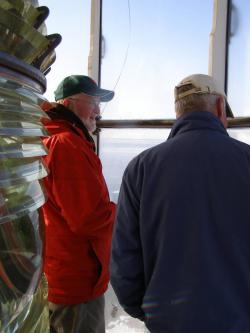
The Smith-Wintemberg award is presented irregularly, as warranted, to individuals who have made a significant lifetime contribution to the field of Canadian archaeology. It is our highest award for distinguished service to the CAA. When the CAA executive was asked to consider presenting the award to Dr. William J. Byrne, the motion was unanimously approved.
Bill’s contributions to archaeology may not fit the ordinary definition of our profession; on the contrary, in all respects they have been extraordinary. Bill’s career, and his genius, has not so much been in the field-work he conducted or the site reports written – though to be sure he paid his dues in his early years. Bill’s career moved in different directions, and Canadians generally, and especially Albertans, should be grateful that it did.
Bill was born and raised in southern Alberta. He attended the University of Calgary where he quickly focused his attention on the newly formed Department of Archaeology. Guided by mentors Richard Forbis and Scotty MacNeish, Bill excavated with Barney Reeves at some of southern Alberta’s classic sites, including the Fletcher Palaeo-Indian bison kill and Head-Smashed-In Buffalo Jump. Recognizing Bill’s evident talent, MacNeish advised him to by-pass the Masters program and go directly for a PhD at a senior American university. Bill was accepted at Yale, where he completed his PhD in 1973. An archaeology professor from Yale once told me that two of the best students they ever had were Canadians: Bruce Trigger and Bill Byrne.
From Yale Bill moved to Ottawa where he joined the staff of the Archaeological Survey of Canada. Bill initiated a much-needed Plains program at the ASC and conducted important surveys in Saskatchewan and Alberta. But his stay there was short-lived. What must have seemed like the dream job opportunity called him back to Alberta.
At a still fairly young age Bill became the Director of the Archaeological Survey of Alberta and quickly built that organization into the largest, most influential and I believe most respected archaeological office in Canada. When Bill arrived the Archaeological Survey consisted of a desk, a filing cabinet and a secretary. Within less than a decade there were more than two dozen staff, including five research archaeologists, a director of research, a paleoenvironmental researcher, a faunal analyst and collector, an entire development planning section, support staff, secretaries, vehicles, and a mountain of top-notch field equipment.
More importantly, there was the Historical Resources Act, which was then and still is regarded as a flagship piece of heritage legislation not just in Canada and North America but around the globe. This Act has many significant clauses, none more profoundly important than the assertion that the Crown owns all archaeological and palaeontological resources in Alberta. The importance of the Act cannot be overstated: if you find a Tyrannosaurus-Rex skeleton in South Dakota, the ownership issue goes to court for years and eventually the bones will likely be auctioned where millionaires bid on it so they can have it in their private basement. The same discovery in Alberta gets you a thank-you from the Minister and the skeleton goes on display at a museum where millions of visitors will enjoy and learn from it. If the latter scenario is more akin to your vision of heritage preservation, you have Bill Byrne to thank.
With some trepidation, Bill moved up the government chain of command – or as Jim Wright put it – ascended into rarefied air. And it was in Bill’s role as Assistant Deputy Minister and later Deputy Minister of the department responsible for Culture that he made his most lasting contributions to heritage preservation and development. It is well known that Alberta has the largest and most comprehensive system of historic sites developed for public interpretation in Canada; what is not as well known is that nearly all of this network was assembled due to Bill’s determination and direction. From simple, seasonally operated fur trade posts with walking trails and signage, to massive museums dedicated to everything from diesels to dinosaurs, Bill compiled a fleet of 18 developed heritage sites in Alberta. Best known of these are the Royal Tyrrell Museum of Palaeontology, which this summer will welcome its 10 millionth visitor, and Head-Smashed-In Buffalo Jump, which has had more than 2 million visitors.
To date, the historic facilities that Bill Byrne directly caused to exist have welcomed some 15 million members of the public – that’s 15 million people who have come away with a greater appreciation of what our heritage is and why it’s important to preserve it. In the view of the CAA executive, that’s a contribution that towers over the field work and site reports that so many of the rest of us produce.
Bill made contributions to Canadian heritage in countless other ways; too many to detail here. But I would be remiss not to mention the service Bill has given to our organization. He served as the President of the CAA, and spent many years working diligently on drafting and lobbying hard for the enactment of Federal heritage legislation. It was through Bill’s efforts that 20 years ago we came within a whisker of having a federal heritage act tabled in parliament.
Bill, congratulations on a job well done, and a career well spent. The heritage of this province and this county is in a better place thanks to your lifelong efforts.
It is my honour to present the Canadian Archaeological Association’s Smith-Wintemberg award for distinguished lifetime service to Dr. William J. Byrne.
Jack W. Brink
Past President, CAA
